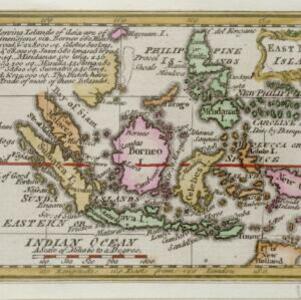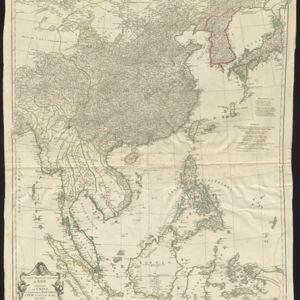
East India islands
1758
Brunei, East Timor, Indonesia, Malaysia, Philippines, Singapore
Text on this mid-18th century map notes the dimensions of the islands of maritime Southeast Asia, in length, breadth and square miles (e.g. ‘Java 580 long, 105 broad, & 38,250 sq.’). It also states that the Dutch are the main traders in the region.



















